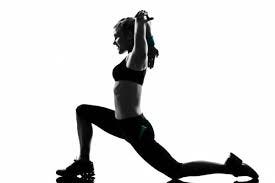#theblog
Common exercise mistakes and avoidance
Exercise is like driving a car; there is a wrong way and a right way to do it. When you do it right, you get from A to B in one piece. Do it the wrong way and you can end up flat on your back recovering from injury. Anecdotally, most of us are guilty of exercising the wrong way at some point and we have the scars and niggling injuries to prove it. It’s easy to make mistakes when you exercise. Often it’s because we haven’t been trained in the proper techniques, and occasionally it’s because we just don’t pay close enough attention to what we are doing. In either case, mistakes in exercise can be counter-productive to your goals and harmful to your body.
When one exercises, they want to make sure that they are getting the most out of it by receiving the best benefits that come from the routines that they practice. It must be noted that there are right ways to exercise as there are wrong ways. Many people mistakenly believe that as long as they get their adrenaline pumping and blood flowing they are correctly performing their exercises. This is a huge misconception that must be corrected. There are plenty of errors that people make while performing their exercise and they should be promptly notified. Below, we have identified what we feel to be some key exercise mistakes made by people:
- Not stretching enough:

It’s always a good idea to stretch for a few minutes prior to exercise, especially concentrating on the muscles that will be used during the fitness activity. Most importantly, spending time stretching after a workout for about 8–10 minutes, you will reap major benefits. Muscles that are flexible are far less likely to be injured than tight ones.
- Poor Technique or form

Using incorrect form can lead to injury. Examples include: letting the knee extend beyond the toes during a lunge or squat; using momentum to lift heavy weights; not exercising through a full range of motion will produce less-than-optimal results. To learn proper form, it’s helpful to invest in a few sessions with a certified Personal Trainer.
- Incorrect Machine Set-up
Exercise equipment is adjustable and it’s important that you set it up to fit you before you use it. If you don’t know how, ask a staff person. Using poorly adjusted equipment is a set-up for injury.
- Inconsistent Progression
Exercising too hard and too often, or increasing intensity too quickly is a common mistake. Consistency and gradual progression are important for avoiding injury as well as for making improvements.
- Overestimating Your Exercise
This is a sure-fire way to an injury and a painful one at that! Too much weight will contribute to poor form when lifting and create injury to other areas of the body in addition to the muscle you’re targeting. Know your limits.
- Jerking while lifting weights

Lifting too much weight can contribute to jerking. The best way to strength train a muscle is by using slow, controlled movement. If you’re jerking your weights you’re inviting injury, especially to your back muscles.
- Improper breathing

Most of us don’t pay attention to our breathing when we are exercising. One should incorporate proper breathing techniques into each move by inflating your stomach as you inhale and squeezing your abs as you exhale. This way you regulate the exercise speed, intensity and work on your core muscles at the same time.
- Long exercise breaks
Socializing with friends may take a lot of your time at gym. Focus on what you do at the moment. It is not the amount of time you spend inside the gym, but the amount of quality exercise you do that gets results.

- Not Drinking enough water
If you wait until you are thirsty to have a drink, you are probably not getting enough fluid. Most people drink just when they are thirsty, but being thirsty is a poor indicator that your body needs water. When you are dehydrated it can lead to cramps and muscle tightness which can result in muscle tears. On days that you exercise, you should drink even more water to rehydrate your body.

- Not Cooling Down
When your schedule is busy it’s tough enough to fit in a workout. So to add extra time for a cool-down can seem impossible. But it’s important to allow cool-down, even if just for 5 minutes. Just as your body needs a warm-up it also needs a cool-down. Take some time to gradually let your heart-rate lower. Stopping aerobic activity abruptly can cause a number of problems such as blood pooling in your lower extremities or making you feel light-headed.

- Poor Goal Setting
Unrealistic or vague goals can contribute to exercise dropout. The key is to establish a training goal that is specific and appropriate for your fitness and skill levels. Try to define challenging but not impossible goals.

Other areas to watch during physical activity include pacing yourself and safety. Remember that even the best athletes didn’t become so overnight. It takes determination, endurance and patience. Enjoy exercise, but do it safely. And remember, physical fitness is a journey, not a destination.


